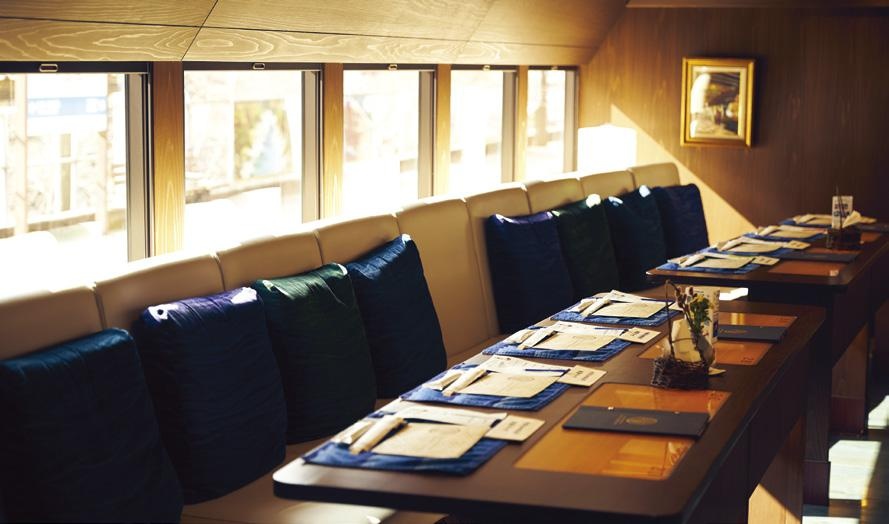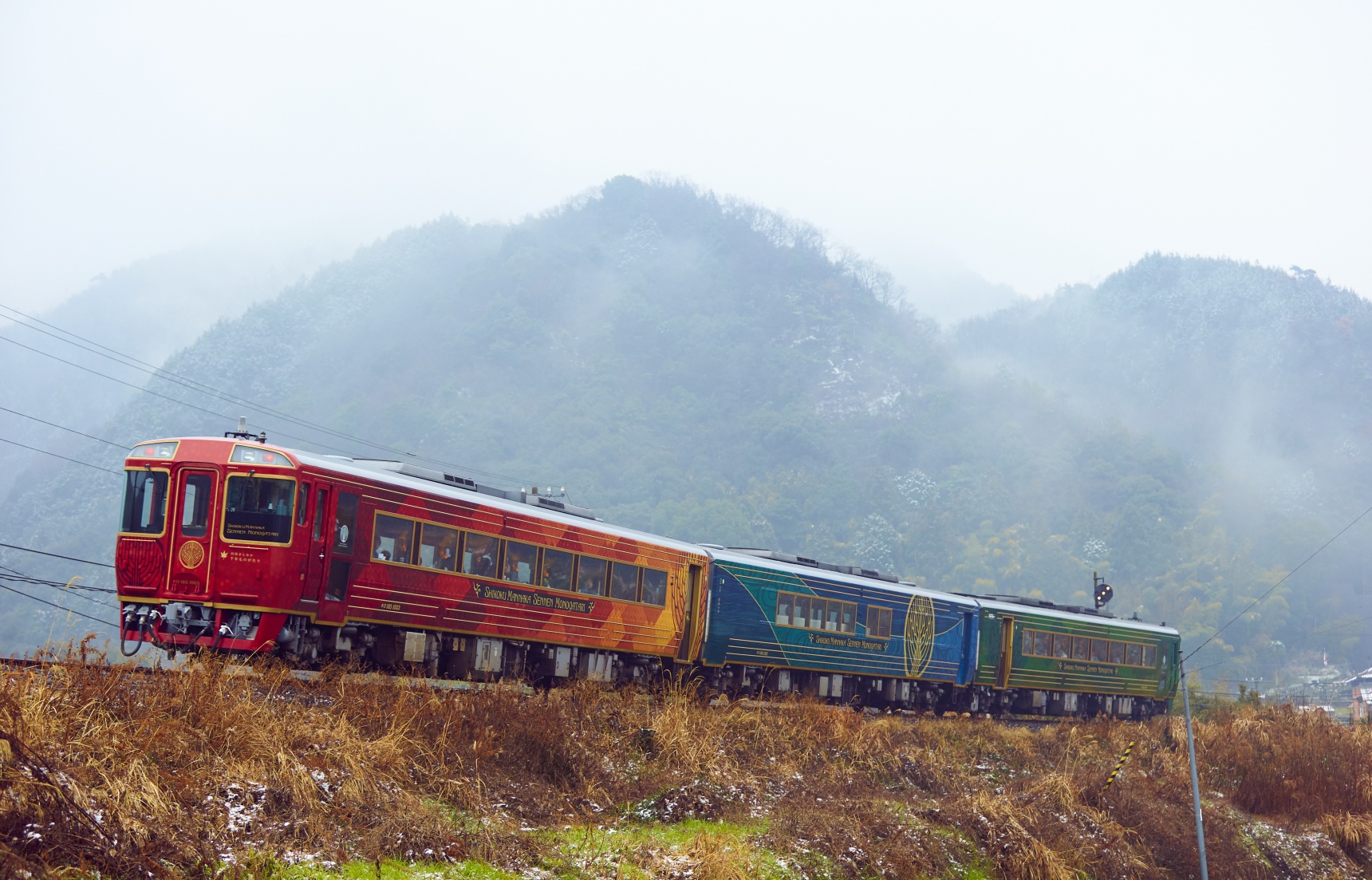Riding Through the Heart of Shikoku
Running across the prefectures of Kagawa and Tokushima on the island of Shikoku, the charming sightseeing train known as Shikoku Mannaka Sennen Monogatari has a cozy interior done up like a traditional Japanese farmhouse.
By Highlighting Japan
https://www.gov-online.go.jp/eng/publicity/book/hlj/html/201904/201904_13_en.html
It takes you on a three-hour ride through mountains, along rivers and past a thousand years of culture, and offers cuisine made with local ingredients.
Shikoku Railway Company’s Shikoku Mannaka Sennen Monogatari sightseeing train operates between Tadotsu Station in Kagawa Prefecture and Tokushima Prefecture’s Oboke Station. This three-car train got its name because it runs on the Dosan Line—which crosses the middle (mannaka in Japanese) of Shikoku—and the spectacular temples and shrines along the way, such as Kotohiragu Shrine and Zentsuji Temple, that boast over a thousand years (sen nen) of history.

https://www.gov-online.go.jp/eng/publicity/book/hlj/html/201904/201904_13_en.html
Designed in a wonderfully Japanese style, the train’s look also reflects the passage of the four seasons. The first car’s color scheme is based on the color green and is called Haruakari no Sho (Spring Chapter). The second car is the blue Natsusugashi no Sho (Summer Chapter) on one side and white Fuyusugashi no Sho (Winter Chapter) on the other, while the third car is the reddish Akiminori no Sho (Fall Chapter). The Winter Chapter side of the second car is only visible at Tadotsu and Oboke stations while stopped.
The train’s interior decor is inspired by kominka—traditional farmhouses—and full of decorative details. The walls are lined with sugi (cedar) panels produced in Tokushima, the walls above the windows are sloped to resemble the eaves of a house, and the latticed ceiling is designed to resemble a fire shelf above an irori hearth. The deck has a display of locally produced crafts such Kagawa shikki (lacquerware) confectionery trays and mima wagasa (Japanese paper umbrellas) from Tokushima, as well as an Otani ware ceramic sink. Each table is set with Awa Shijira-ori woven luncheon mats on the trip between Oboke and Tadotsu stations, and Sanuki norizome dyed mats on the opposite route. You can drink locally brewed sake using drinking vessels crafted by Living National Treasure Yoshito Yamashita. One of the train’s greatest charms, in fact, is the opportunity it gives passengers to discover Shikoku’s traditional crafts and other products.

https://www.gov-online.go.jp/eng/publicity/book/hlj/html/201904/201904_13_en.html
This sightseeing train is limited to just one round trip per day on Fridays, Saturdays, Sundays and public holidays. Meals can be booked when making a reservation. The menu is Western on the trip from Tadotsu to Oboke, and Japanese on the return trip. All the dishes are cooked with pride by local chefs using locally produced ingredients.
There are various sightseeing spots along the way. Recommended in particular is Kotohiragu Shrine. Also affectionately called Konpirasan, this shrine has attracted visitors from all over Japan since ancient times. Although its foundation date is unknown, the oldest remaining record of the building’s reconstruction dates back to 1001. The stone stairway from the entrance to the main shrine has 785 steps, while getting to the rear shrine takes 1368 steps. Though you should never overexert yourself, the sense of exhilaration when you are finally on top of these stairs is exceptional. Another stunning spot is Oboke Gorge. Shaped over 200 million years, this natural marvel is located near Oboke Station, where the train tour route ends. You can enjoy beautiful views of the valley from the train windows.

https://www.gov-online.go.jp/eng/publicity/book/hlj/html/201904/201904_13_en.html
Looking out the windows of Shikoku Mannaka Sennen Monogatari, you’ll see smiling locals waving handmade flags at the train. At Awakawaguchi Station, you will receive an enthusiastic welcome from people dressed as tanuki (raccoon dogs), which the area is known for.
“The wonderful thing is that the local people came up with these ideas on their own,” says Toshiji Tsuta, general manager of the Shikoku Railway Company’s Shikoku Mannaka Sennen Monogatari project. Many passengers say they were touched by the hospitality of the locals, with some even moved to tears.
“We can only provide services within the train,” Tsuta says. “Local people add to the experience in ways we couldn’t. Without their support, we wouldn’t have that unique ‘Shikoku Mannaka Sennen Monogatari experience’ our passengers love.”
In recent years the line has been transporting many more passengers from other countries, so it is now well prepared with services in English. A trip on this elegant train is a wonderful way to experience over a thousand years of culture and a warm Shikoku welcome.





